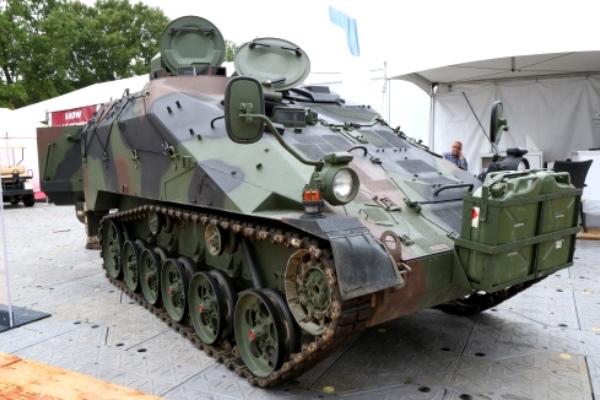The U.S. Army has quietly canceled its Light Reconnaissance Vehicle program and decided instead to equip cavalry scout units with the more general-purpose Joint Light Tactical Vehicle.
Maneuver leaders have been discussing the need for a Light Reconnaissance Vehicle since 2012 at Fort Benning, the home of the Maneuver Center of Excellence.
Scouts need a specialized vehicle with enough firepower to destroy enemy recon formations, Lt. Gen. H.R. McMaster, director of Army Capabilities Integration Center and deputy commanding general of Futures at Training and Doctrine Command, told an audience at the 2015 Maneuver Conference at Benning.
The LRV would also allow scout units to provide security for light infantry on an approach march in ground mobility vehicles, McMaster said at the time.
The Army held a two-week vehicle assessment at Benning in August involving six companies as part of a platform demonstration to evaluate prototypes from industry.
But the Army has now effectively canceled the LRV program without notice, and decided instead to equip scout units in infantry brigade combat teams with the service's long-awaited Humvee replacement -- the JLTV, according to an industry source who requested anonymity to speak freely about the issue to a reporter.
Military.com contacted the Army and received the following response by email:
"Light Reconnaissance Vehicle is not currently an Army program. The Army is fielding the Joint Light Tactical Vehicle to replace the Scout HMMWVs in IBCTs with potential sensor and/or lethality upgrades," said Army spokesman Troy Rolan Sr.
The Army awarded Oshkosh Corp., a $6.7 billion contract last fall to build the first 17,000 production models of the JLTV. Both the Army and Marine Corps plan to buy a total of nearly 55,000 of the combat vehicles, including 49,100 for the Army and 5,500 for the Corps, to replace about a third of the Humvee fleets.
Lockheed Martin protested the award to Oshkosh but withdrew it in February after the release of a Pentagon test report that shows that Oshkosh's JLTV was far more reliable than its competitors, as measured by the average number of miles between failures.
Oshkosh's JLTV prototype had a reliability level almost three times higher than the requirement for the Army and Marine Corps. In addition, it was more than five times more reliable than Lockheed's and 13 times more reliable than AM General's.
Despite its reliability, Army maneuver officials are not convinced that JLTV will satisfy every mission.
The U.S. Army's 1st Brigade Combat Team of the 82nd Airborne Division will jump into Poland on June 6 with 10 lightweight, all-terrain vehicles made by Polaris Defense.
The operation is a test of the 82nd's ability to bolster NATO's eastern flank against Russian aggression in a hurry. The four-seater Polaris ATVs are still a "pilot program" for the 82nd but are intended to give the paratroopers more mobility once they hit the ground.
U.S. Special Operations Command in 2013 awarded a contract for a similar but separate program to buy about 1,300 so-called Ground Mobility Vehicles, or GMVs. General Dynamics Corp. won the award with its Flyer Advanced Light Strike Vehicle, designed to carry seven passengers, weigh less than 7,000 pounds unloaded and be internally transported by a number of aircraft.
The Army has been talking for some time now about equipping infantry brigade combat teams with mobile protected firepower platforms that can ensure freedom of movement for infantry in close contact with the enemy and can do so in forcible entry operations.
The service issued a Sources Sought document for the Light Reconnaissance Vehicle Platform Performance Demonstration in January 2015.
It stated that the vehicle must carry six soldiers, with a total payload 2,100 pounds. The vehicle must not exceed 11,669 pounds so it can be carried internally or sling-loaded by a CH-47 Chinook helicopter.
The vehicle must be capable of mounting a weapon system, such as a 30mm cannon, which can engage targets accurately at a range of at least 1,000 meters, according to the sources sought document.
Rheinmetall Defense showed up at the platform demonstration August with its Weasel, light-armored vehicle.
The tiny tracked vehicle is capable of a road speed of about 43 mph and can fit inside a CH-47 helicopter and a C-130 aircraft. It can be equipped with a remote weapon station and features light armor that can protect against 7.62mm ammunition and shell fragments.
It's unclear what the demonstration showed, but in a follow up email the Army spokesman stressed LRV is not moving forward.
"The LRV is not a program," Rolan said. "JLTV is the Army program that will provide the needed capability."
--Brendan McGarry contributed to this story.
--Matthew Cox can be reached at matthew.cox@military.com.




























